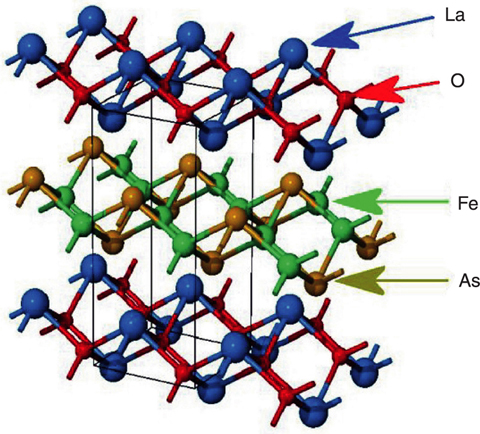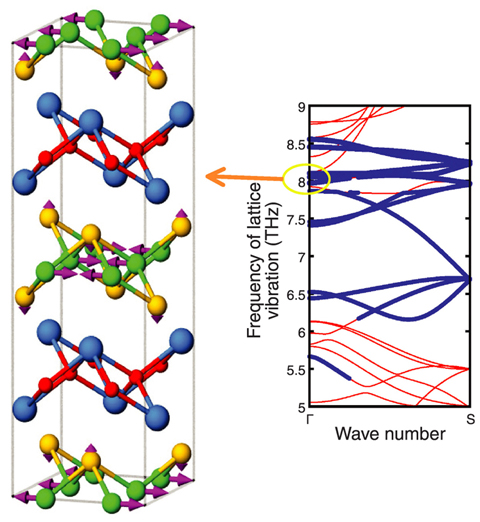
Fig.12-7 Crystal structure of the first iron-based superconductor LaFeAsO

Fig.12-8 Visualization of the lattice vibration in the iron-based superconductor LaFeAsO and its dispersions
Superconductivity is a phenomenon characterized by disappearance of electric resistance at very low temperature. Until 1980, it had been believed that this phenomenon did not occur above 30K. However, cuprate superconductors whose superconducting transition temperatures rise above 100K were discovered in 1987. This discovery encouraged many to search for room-temperature superconductor. Unfortunately, room-temperature superconductors have not been discovered yet, and moreover no materials that deserve the name of high-temperature superconductor have been found except for cuprate superconductors.
In 2008, when the dream of room-temperature superconductors was fading away, iron-based superconductors (Fig.12-7), which exhibit superconducting transition above 50K, were discovered. Since then, many researchers all over the world have been enthusiastically trying to discover higher-temperature superconductivity in iron-based materials.
To achieve higher-temperature superconductivity, it is necessary to understand its superconducting mechanism. It is known that the mechanism of cuprate and iron-based superconductors is different from that of metals whose superconductivity occurs at considerably lower temperature. However, no one has elucidated this mechanism yet. To make progress in this situation, we evaluated electronic states of iron-based superconductors by numerical simulations and compared them with experimental data, aiming to shed light on the superconducting mechanism.
It is well known that lattice vibration, that is, vibration of atoms, plays an important role in the superconductivity of metals. We evaluated lattice vibration by numerical simulation (Fig.12-8) and compared it with measurement data obtained at "SPring-8". We found that our simulation of lattice vibration agrees well with the measurement, if one takes into account iron magnetism which was not detected experimentally. This result implies that in this superconducting material there is hidden magnetism which has an inseparable relation with the lattice vibration. Thus, we revealed that both magnetism and lattice structure play an important role in the superconducting mechanism.
This comparison between simulations and measurements is aiding our investigation of the superconducting mechanism, which is still however far from completed. We hope that effective coordination of numerical simulations and experiments will clarify this mechanism and help make the dream of room-temperature superconductors come true.